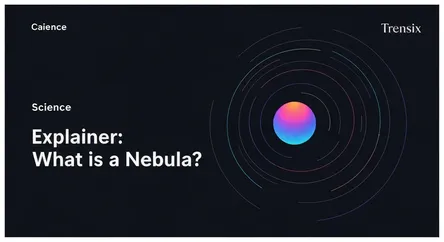Science
Explainer: What is a Nebula?

Discover nebulas, the breathtaking interstellar clouds of dust and gas where stars are born. Learn why these cosmic nurseries are key to the universe.
What is it?
A nebula (Latin for 'cloud' or 'fog') is a vast interstellar cloud composed of dust, hydrogen, helium, and other ionized gases. Often called 'star nurseries,' these cosmic clouds are the birthplaces of stars and planetary systems. Gravity slowly pulls clumps of gas and dust together, causing them to collapse and heat up, eventually forming a protostar. Nebulas come in various types, including emission nebulas that glow with their own light, reflection nebulas that shine by reflecting light from nearby stars, and dark nebulas that are so dense they block light from behind them. Famous examples include the Orion Nebula and the Eagle Nebula's 'Pillars of Creation.'
Why is it trending?
Nebulas are consistently a trending topic thanks to breathtaking new images from advanced observatories like the James Webb and Hubble Space Telescopes. These powerful instruments capture these distant objects in unprecedented detail, revealing intricate structures and vibrant colors that were previously invisible. Each new image often sparks viral interest online and provides astronomers with crucial data about the mechanics of star and planet formation, keeping nebulas at the forefront of cosmic discovery and public fascination.
How does it affect people?
While nebulas are light-years away and have no direct impact on daily life, their study is fundamental to understanding our cosmic origins. The very elements that make up our planet, our solar system, and even our bodies were forged inside stars that began their lives within a nebula billions of years ago. On a cultural level, the stunning beauty of nebulas inspires awe, art, and philosophy, encouraging humanity to look up and ponder its place in the vastness of the universe. They represent the cycle of cosmic birth and death, reminding us of our connection to the stars.